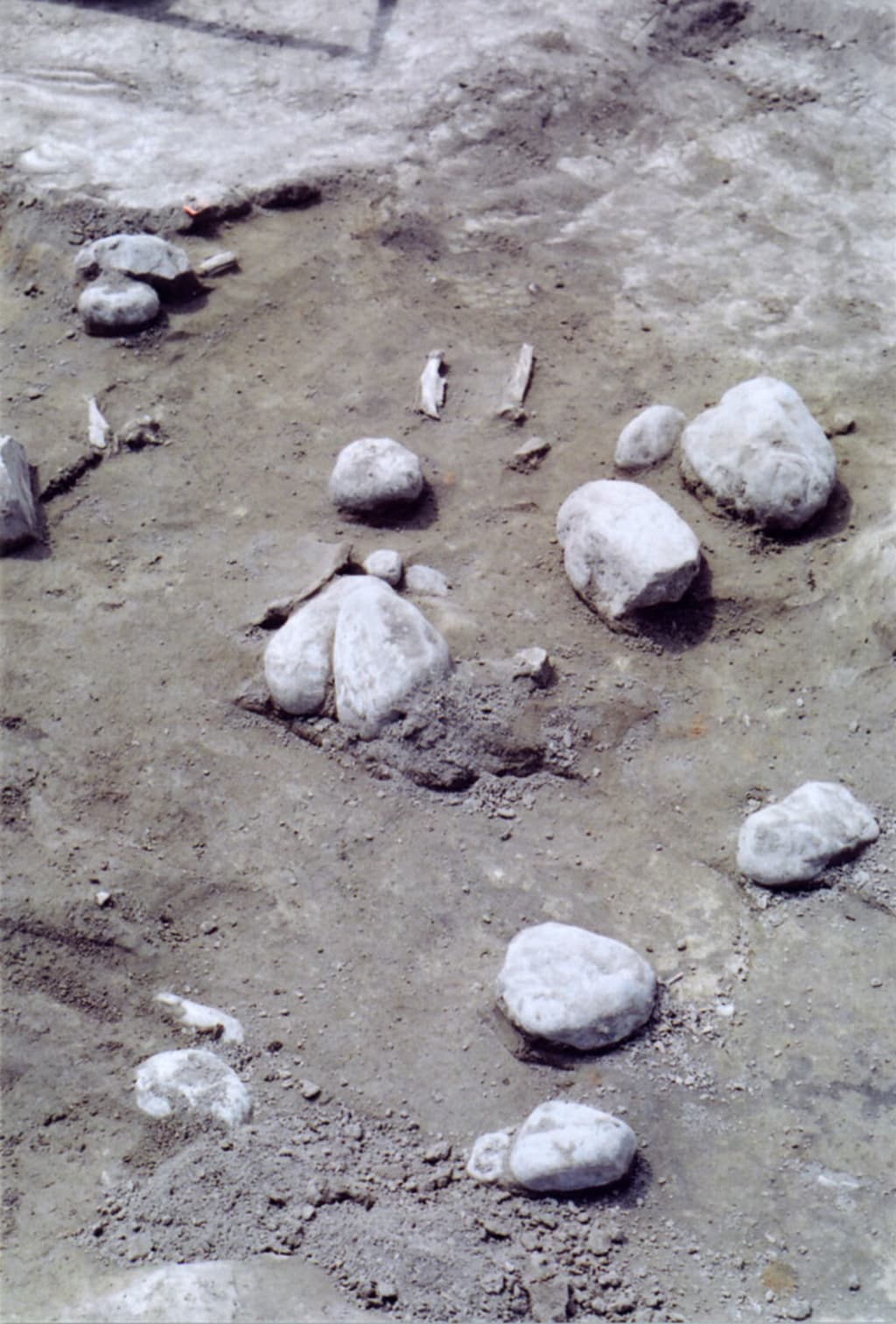
“It is a pleasure to finally meet you in person, Mr Gladieu. Your first articles are quite well-received, as my colleague, Dr. Feroe, tells me.” The lady in the middle of the panel sitting opposite the young man had a reputation. A former Crown prosecutor, the Associate Minister was a behemoth in discussions. The government had ran, and won, on a platform of job creation and a revival of industry. The area's fortunes would be due to her expert and proven ability. And, now, at this review, she would successfully slough another request. Which is why she was so formidable at her job, and baleful to her opponents.
“Mr Gladieu, your research is about the ephemeral remains of a ritual site from approximately 1,500 years ago, if I understand it correctly. Since there is nothing that a person can blatantly see, what should this panel be expected to demonstrate to the public to justify a hold-up of industry?”
Robert Gladieu was ready. He knew the standard questions, and he knew the insincere flattery of the people across from him. These people were not interested in his research. Three people who would rather spend time at the Pyramids than develop historical sites in their own backyard. His job was to get them to see that his site was monumental.
“Well, Madam Associate Minister, this site isn't ephemeral. My test excavation reveals that there is far more than at first suspected, and in far greater design. This is also not just one site. It is one part of a series of connected locations that collectively form one site. Let me explain this in relation to something that most people know. The Nasca Lines, in Peru. A UNESCO world heritage site. They are paths delineated into a fragile landscape. They still don't have a clear meaning, and we don't know what they truly represent. And yet, a country as poor on the global economic scale as Peru nonetheless has decided to preserve the integrity of these connected sites. Why? Because they create meaning for the modern Peruvian. And for the world. And, they link people in the past to our current time.
“Now, granted, the history of our territory is different. Our landscape has been intensively used. So, with a find like this – a miraculous preservation throughout the ages – it is imperative that we keep this location in protective care. My research gives meaning to these places, the meaning that the Nasca Lines lack. You should expect to demonstrate a unique, globally-significant system that ancient peoples used to understand and harness the energy of the natural environment. This type of significance generates tourist dollars. It spurs further academic interest and research, which means enhanced growth of institutions, and philanthropic activity ... ”
“Well, that is a tall order. Very few places of cultural importance can do that, and this site is no Egyptian pyramid. It is not going to attract tourists, nor a flood of academics,” stated the executive. He was in a grey, pin-striped suit and cowboy boots. Of course this prick had to wear cowboy boots. “While it may be interconnected, how does its preservation meet the definition of a world heritage site, like the Nasca Lines?” the executive continued prodding.
Robert opened his notebook to a section near the beginning. The black notebook. The entire anthology of his work, all in the notebook that his Little Father had given him years before. “This is for your tribe, Nisemis. Write things down. The written word is more real for some than our oral stories.” The notebook had space for project and travel planning – so he could stay ahead of every deadline – as well as detachable to-do lists to help manage his priorities. His was a soft cover, with rounded corners and matching elastic closure and bookmark ribbon, which felt just like a proper deerskin pouch of his Mosom. There was an inner pocket from cardboard and cloth that held his sketches and rubbings, and the ironic “in case of loss” notice printed on the flyer; as if anyone would ever find his notes out of his care. They were too precious to leave lying around.
“One of the criteria of a world heritage site significant here is its uniqueness. Every site that is monumental doesn't have to be a big building. This site is monumental because it has shaped the landscape that leads to the ability to extract resources beneath our feet. Its uniqueness has led people to use the places in a certain way, and those habits and patterns have created a world-significant site that demonstrates we, as humans, have the ability to maintain the balance of our planet. A balance that can be maintained with proper planning, and receptive to the energy we harness. Instead of rushing a project for industry – a project which, I know, we all agree is necessary, and highly beneficial to all – we need to understand its place in a landscape of epoch significance. You do this here, and you look like true leaders. And the people who make that decision will have their names remembered for generations to come.”
Okay, he was playing to the egos in the room a little, but he was right. Not many people journey to see a mineral extraction site. But people talk all the time about experiences with cultural monuments.
“Robert, you know I know your work these past few years. Would you mind telling us why this is so unique?” Dr Feroe was an irenic person, and the token University representative on the panel. Robert flipped to another spot in his notebook. “Thank you, Sir. Yes, let me just reference one particular observation, when I find it here.”
“Have you carried that notebook with you the entire time, in the field?” the lady asked. “It's in good condition for something so well-used.”
“This one? No. This is special. This is my notebook for, well, for the ancestors. When I'm finished, I plan to give it to them as an offering, so they can see and understand all of the steps I had to take to present their story. Versatile and practical, it is designed to increase productivity and efficiency throughout my working day. Its structured pages focus my thoughts on personal and group goals, while numbered pages and a contents list help keep track of my notes and progress.”
“What, is this a commercial for notebooks now?” chided the glib executive through his glasses and down his pointy chin.
“Uh ... no. It's just a good product. When the average person speaks of the impact of your product in everyday life, you know you've made a difference. Otherwise, you're just passing through time, really, unnoticed. See, it doesn't matter what you produce, or what you extract, or how many supposed jobs you provide. If no one references it, it might as well come from somewhere else. Talk to people in a local cafe near the area we are discussing, and they actually can't tell you anything about the resources you currently extract, who uses them, what they produce. They don't know. They have no connection to them. And, why should they? They're too busy working wherever, for whomever, doing whatever, not following your business model and its implementation. They hope to earn enough ... my apologies. I'm definitely off track ... you have a good product.
“But, so do I. To answer your question, Dr Feroe, it is unique because it appears to be the navel of this vast network of sites, from where all others connect and reference. The oldest, and the most detailed in its planning and construction of any that we have ever seen. But, unlike the other medicine wheels, this one has undisturbed patters and stone alignments, which are reflected accurately in many of the stories of the Indigenous people. We can use this place to reconstruct others, and even locate sites and monuments previously unknown.
“This isn't just a pile of rocks. We can help the rest of the world know its significance. It's a place of healing, of gathering, of community. Energy is restored at such places. Energy for harvesting, energy for researching, energy for discovering, energy for family and friends and parties and celebrations. The natural energy, the technological energy. This is a place that drives all around it.”
“Mr Gladieu,” interjected the Associate Minister, “I am convinced that you are your topic's savant. And, you are certainly passionate about your findings, and the place, and, let's be honest, the significance it has for you and your ancestral legacy. But, we really are faced with a quandary: this is one of the only places in the entire country of ours to access these resources. And, we have a company with a long history of good working practises, of solid procedures and methods for environmental protection. What importance is this, one more site, when it has been documented and photographed?”
“Well, then what's the point, Madam Associate Minister? If you don't actively preserve history and culture, then why struggle publicly at all? Why keep records of history in libraries or museums? Why pretend to care about traditions and imprecate other people around the globe when they develop their resources? When we knock down something that is irreplaceable, that holds the entire framework of a landscape in place with not only meaning and symbolism, but in physical and metaphysical cohesion, who are we as people? Do we knock down our memorials to the Veterans during the Wars? The graveyards we allocate urban space towards? Do we build just to destroy? Why fight in wars, why pretend to honour culture, if its entirety doesn't matter, because we just erase it anyway when the opportunity presents itself?
“Whatever you thought before this review, the message should be that you are people who inspire. You are protectors, developers, and stewards that are the envy of others. Where others have problems, you find solutions. Where others destroy, you preserve and incorporate. Where others fail, and their dreams end in disaster, you persevere, succeed, and profit. And those results add to our story. That is the power of this site. That is the symbol of our work. And that is what I need to continue to do.”
The panel looked at each other. Perhaps, these three people weren't representing anything different than Robert after all. What if they weren't the adversaries that he thought, but rather partners? The executive made some notes in his book: “What? You think we don't have a few options already identified? That's why, like he said, we're so good.” The associate minister smirked, and turned to Robert: “Mr Gladieu, we needed to make sure that we are, in fact, important partners, and can trust you to carry on in this task. We're giving you a grant, for $20,000. Thank you, and the absolute best of luck.”
With that, the panel stood up in each of their own awkward ways, and left the room. Robert sat in silence, not being able to think of anything. Finally, a gentle, rocking took over his body, and he began to cry. All that work in his notebook had led him to be awarded money towards the completion of his degree, to fund his work, an integral part of the modern cultural landscape. Possibly the best use of funds that a young man, passionate about his profession and his work, could have imagined. And, despite his fear, his anxiety, his own prejudices, he was able to win others to his cause. He cried loud, and happily, tears streaming down his face, a big smile interrupting their straight course to the tip of his chin and down his neck. This was, indeed, a new beginning.





Comments
There are no comments for this story
Be the first to respond and start the conversation.